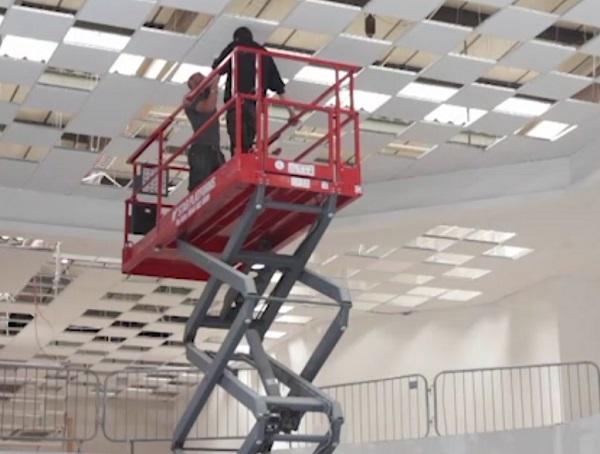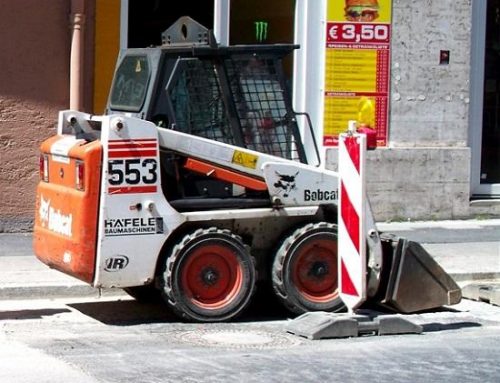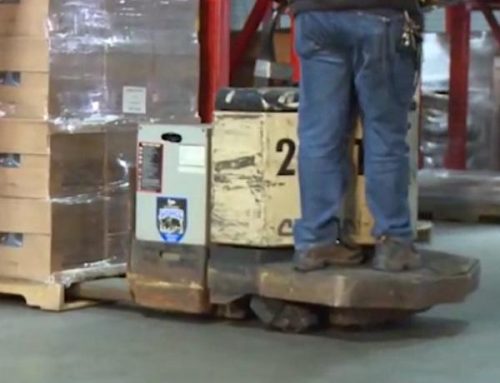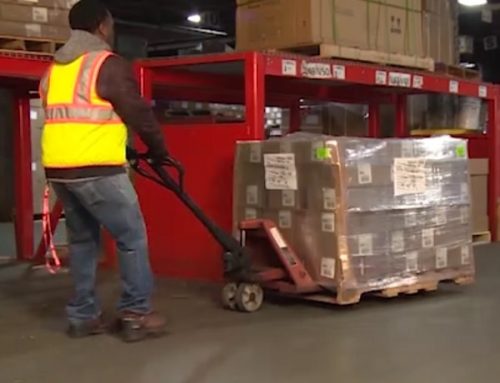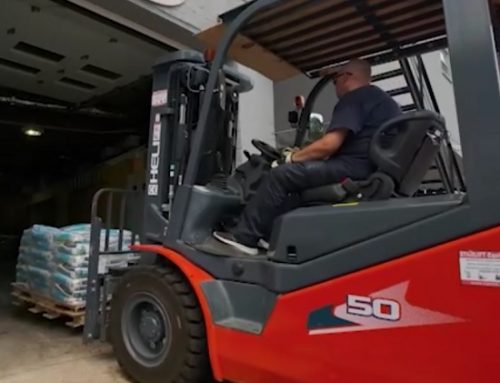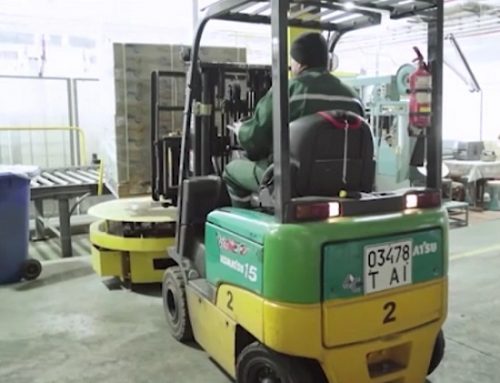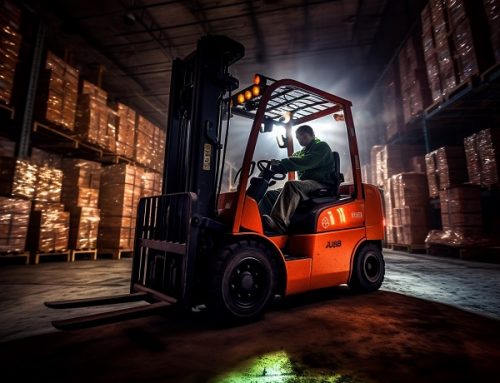Working at height is often necessary across many industries, whether it be construction, manufacturing, warehousing, or others. Scissor lifts provide a useful way to safely access elevated work areas, but they can also pose hazards if not used properly. This comprehensive article on scissor lift safety is adapted from an online training course on their safe operation. It will provide an overview of scissor lift types and their hazards, inspection procedures, proper setup and operation, as well as precautions for ground workers near lifts. With the right training and safety measures, scissor lifts can enable working at height productively and without incident.
Types of Scissor Lifts: There are several types of scissor lifts to choose from depending on the nature and location of the required work. The most common types are electric, diesel, propane or gas-powered. They come in different sizes with platform heights ranging from just a few feet up to over 60 feet. Certain scissor lift models are designed for use indoors on finished floors, like in warehouses, while others are engineered for outdoor use on rough terrain at construction sites.
Hazards and Safe Practices: While scissor lifts are very useful, statistics show that accidents still occur frequently with these machines. An average of 8 fatalities and hundreds of injuries happen annually in relation to scissor lift operation. It is crucial to understand the main hazards involved and how to control them through proper training and safe work practices.
The most common scissor lift accidents result from:
- Tip-overs – Account for 40% of incidents. Overloading and uneven ground are major causes. Always check weight capacities and use outriggers if needed.
- Falling objects – Tools or materials dropped from lifts can hit workers below. Cordon off work zones clearly.
- Overhead hazards when elevated – Electrocution, head strikes. Identify all overhead risks before raising the platform. Maintain minimum distances from powerlines.
Other safety tips:
- Get trained on the specific make and model of lift you will use. Review the operator’s manual.
- Inspect the equipment thoroughly prior to use each day. Never use damaged or malfunctioning lifts.
- Survey work areas carefully before operation. Address potential hazards like rough terrain, trenches, overhead obstructions.
- Use integrated anchorage points properly when employing fall arrest systems on lifts. Never tie-off to adjacent structures.
- Don’t overload platforms. Check weight ratings. Distribute loads evenly.
- Never overreach from platforms. Use integrated slide-outs if reaching nearby areas. Never use planks between platforms and structures.
Inspecting Lifts and Worksites:
Thorough inspections must be completed before using scissor lifts:
- Pre-start lift inspection – Check fluid levels, tires, battery, controls, safety devices, decals, etc. Refer to the operator’s manual. Remove damaged lifts from service.
- Work site inspection – Survey for drop-offs, holes, underground utilities, overhead obstructions like rafters and lights, cluttered floors. Address hazards.
When siting lifts, ensure ground is level and stable. Use outriggers if needed. Cordon off work zones clearly with cones or tape. Inspect any fall protection equipment to be used.
Set Up and Operation:
With inspections complete and the location prepped, follow good practices when setting up and using scissor lifts:
- Review the operator’s manual for model-specific guidance.
- Make sure lifts sit on solid, stable ground. Use pads if needed. Deploy outriggers fully if equipped.
- Enter platforms carefully. Close access gates. Wear fall protection properly attached to manufacturer anchor points if needed.
- Don’t exceed weight capacities. Distribute loads evenly on platforms for stability.
- Keep feet firmly on the platform floor at all times. Never climb on railings. Use integrated slide-outs only.
- Test controls and make sure lifts move smoothly prior to elevating. Raise platforms slowly to required height.
- Use extreme caution near overhead power lines. Maintain minimum safe approach distances.
- When work is complete, clear personnel and obstructions from below. Slowly lower platforms.
- Fully stow lifts when parked. Charge batteries if needed. Remove work zone warnings and barriers.
Ground Worker Precautions:
Those working on the ground around scissor lifts also face hazards:
- Stay clear of elevated lift platforms and their potential drop zones. Wear hard hats in case objects fall.
- Be aware of blind spots. Lift operators may not see you. Make yourself visible.
- Never work under raised platforms. Constantly monitor your proximity to lifts.
- Ensure you are aware of lift movements at all times. Never assume operators see you.
- Spotters can be used to improve visibility and communication between operators and ground personnel. Coordinate signals.
Conclusion: Scissor lifts provide excellent means of accessing height safely when proper protocols are followed. All operators must receive model-specific training and utilize good inspection practices, setup procedures and safe operating techniques. Ground workers near lifts also need to remain cautious and visible. If relevant guidelines are followed, scissor lifts can improve productivity and efficiency in elevated work without sacrificing safety.
Building on the essential safety principles outlined in this guide, we are proud to introduce the “Scissor Lifts in Industrial and Construction Environments” online course. This specialized training program goes beyond basic safety knowledge, providing in-depth instruction tailored to the unique challenges and risks of using scissor lifts in various work settings. By enrolling your team in this course, you’re not only enhancing their safety and operational skills but also ensuring compliance with industry standards and best practices.
Elevate your team’s safety and efficiency with Our “Scissor Lifts in Industrial and Construction Environments” online course. This specialized training program is meticulously designed to address the unique challenges and risks associated with the use of scissor lifts in various work environments.
Mastering Scissor Lift Safety and Operation
Scissor lifts are vital tools in accessing hard-to-reach areas in construction sites, warehouses, and other industrial settings. However, their operation comes with significant risks if not managed correctly. Our course ensures that your employees are not just aware of these risks but are also proficient in safely operating scissor lifts.
Comprehensive Coverage of Essential Topics
Our’s training program thoroughly covers every aspect necessary for safe scissor lift operation:
- Different types of scissor lifts and the specific training required for each.
- Identification and understanding of the hazards associated with scissor lifts.
- Conducting thorough “pre-start” and “worksite” inspections.
- Best practices for setting up, operating, and moving a scissor lift.
- Safe protocols for working on the ground near an operating scissor lift.
Micro-Learning for Effective Skill Acquisition
Recognizing the busy schedules of industrial and construction workers, Our course utilizes a Micro-Learning format with 3-5 minute modules. This approach ensures that your employees can effectively learn and retain crucial safety information without hindering their work.
Training in English and Spanish
We are committed to inclusivity in safety training, offering all course materials in both English and Spanish. This ensures that every member of your diverse workforce has equal access to this critical knowledge.
Beyond Online Courses
To accommodate different learning styles and reinforce the training, Our also offers DVDs and interactive CD courses. This comprehensive approach ensures a deeper understanding and application of safety practices related to scissor lifts.
Your Partner in Workplace Safety
Choose Our “Scissor Lifts in Industrial and Construction Environments” course to ensure your employees are equipped with the knowledge and skills to safely operate scissor lifts, thereby reducing workplace accidents and enhancing overall productivity.
For a detailed course outline and to experience a demo of Our Online Training System, click below. Let’s take your team’s safety to new heights!


